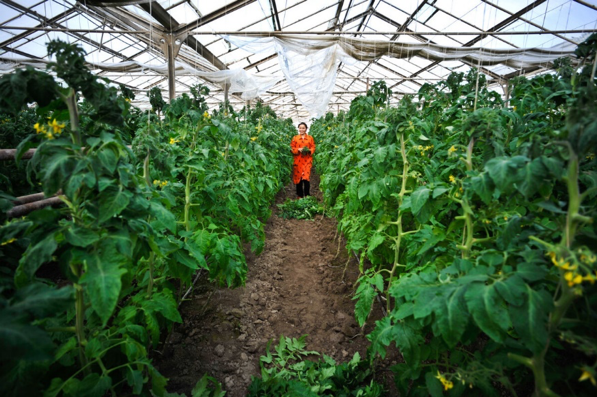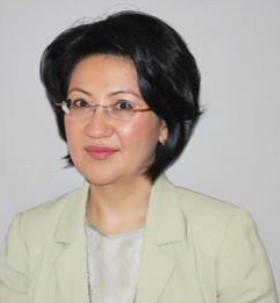ASTANA – In recent years, the Central Asia and Caucasus regions have been facing a myriad of complex challenges that require concerted efforts and regional cooperation. Ranging from climate change impact to food insecurity and economic effects of geopolitical conflicts, these challenges are deeply intertwined and cannot be effectively addressed in isolation. Asian Development Bank (ADB) Director for Regional Cooperation in Central and West Asia Lyaziza Sabyrova explains how regional cooperation can address these challenges and how ADB supports the region through the Central Asia Regional Economic Cooperation (CAREC) Program.

Photo credit: ADB.
CAREC is a partnership of 11 countries and development partners working together to promote sustainable development through cooperation. Kazakhstan has participated in the CAREC program since 1997, as one of the founding members.
The biggest challenges now stem from geopolitical conflicts and climate change impacts. Many countries experience high inflation caused by supply chain disruptions as a result of the Russia-Ukraine conflict.

Lyaziza Sabyrova. Photo credit: ADB.
“While the relocation of many Russians to Central Asia and the Caucasus boosted consumption and business activity, windfall gains may be temporary and long-term challenges are emerging. This reinforces the need for countries to diversify trade routes and their economic ties. Doing so would be better for economic growth and food security in the long run,” said Sabyrova.
According to ADB, growth in the region hit 5.1% in 2022, higher than the initial forecast of 3.6%. Growth, however, slowed in Kazakhstan to 3.2% because of oil production disruptions, exchange rate volatility and higher interest rates from tight monetary policy.
Environmental challenges loom large over the region
Central Asia and the Caucasus are particularly vulnerable to climate change, water scarcity and natural disasters. Some of these climate change impacts have been increasingly evident in recent years. The agricultural sector, which is a crucial source of livelihood and food security for many communities in the region, is particularly vulnerable to the impacts of a changing climate.
“Meanwhile, climate change is causing more extreme weather events that are threatening lives and livelihoods, as we have seen in last year’s devastating floods in Pakistan. Harsher weather conditions are affecting agricultural yields and putting food security at risk. Climate change is also compelling the region to transition to clean energy, which is particularly challenging for certain countries that rely heavily on fossil fuels for both exports and energy,” said Sabyrova.
Sabyrova echoes what many experts have been saying before on the importance of regional cooperation.
“Central Asia and the Caucasus are well known for their delicious and nutritious agricultural products. Countries in the region should work to increase trade in these products to help ensure that there is enough food available at reasonable prices,” she added.
The measures should include modernizing and harmonizing food quality standards and border crossing procedures, which will make it faster and easier to transport goods from one country to another.
“One approach is to tackle both the quantity of produce, for example, easing the seasonality effect, through logistics and marketing operations, and the quality and safety standards of produce by supporting their advance certification for export markets. These have been applied in some countries, including Armenia, Georgia, and Uzbekistan, for high-value horticultural products such as apples, pomegranates, and cherries, among others,” said Sabyrova.
Sustainable food production goes hand in hand with water resources management. Water scarcity has been a key concern as the region faces population growth, increased agricultural demands, inefficient water management practices, and climate change-induced changes in precipitation patterns.
“It is important that Central Asian countries coordinate to manage their shared water resources, such as the Amu Darya and Syr Darya rivers, to ensure there’s enough water for irrigation. Countries can also share knowledge on modern, climate-resilient technologies and practices to maximize agricultural productivity. CAREC is a fantastic platform for countries to come together to address common challenges like food insecurity. Last November, ministers from member countries endorsed a cooperation framework that sets out how they can collaborate on agricultural development and food security,” she said.
Transport and connectivity
“There are several landlocked countries in the region, including one of the world’s only two double-landlocked countries – Uzbekistan – so it is crucial to build efficient land transport networks. Since 2001, more than $30 billion has been invested in CAREC-related transport projects. These projects have resulted in around 10,000 kilometers of newly built or improved roads, and more than 5,400 kilometers of newly built or improved railways,” said Sabyrova.
The progress the countries have reached in making cargo movements cheaper and faster was stalled because of the COVID-19 pandemic. The situation, however, is normalizing, said Sabyrova.
“CAREC uses data from real-time road and rail cargo shipments to track the efficiency of moving goods along six CAREC transport corridors that crisscross the region, linking country members,” she added. “We need to ensure the transitions between road, rail, maritime and air transport are as seamless as possible to encourage trade and tourism and maximize the region’s position as the gateway between Europe and the rest of Asia.”
Making electricity more efficient and reliable
Despite the abundant energy reserves, the region struggles with insufficient electricity generation capacity. Aging power plants, inadequate investments in infrastructure and limited access to modern technologies have resulted in a shortfall between electricity supply and demand, often leading to power outages and unreliable electricity supply, impacting households, businesses and industries.
“The region contains rich reserves of energy, but they are unevenly distributed. Kazakhstan, Turkmenistan, and Uzbekistan are rich in fossil fuels, for example, while the Kyrgyz Republic and Tajikistan have extensive hydropower. Yet, in winter, the hydro-rich countries suffer from power shortages due to reduced water flow and higher demand for heating,” she said.
“The solution is for these countries to trade energy, which implies improving the physical interconnections between countries and better collaboration between grid operators. An ADB study found that if seven countries in the region shared backup capacity reserves as they ramp up renewable energy investments, they could save up to $230 million per year,” she added.
CAREC supports projects and reforms that will help make electricity in the region more reliable, with nearly $9 billion of investments in CAREC-related energy projects since 2001.
“These projects have increased energy generation capacity by more than 130,000 megawatts and installed or upgraded more than 640,000 kilometers of electricity transmission lines,” said Sabyrova.
The region needs clean energy investments
Sabyrova noted the energy efficiency is low in the region “because of aging infrastructure, low energy pricing, and regulatory gaps.”
“Installed solar and wind capacity currently amounts to around 5% of total capacity despite the region’s abundant renewable energy potential,” she added.
According to her, the CAREC region (excluding the People’s Republic of China) needs nearly $340 billion in energy investments by 2030 to enable green growth. Current investments, however, reach just a quarter of this and most are from the public sector.
“Regional cooperation can help to ramp up public and private investments in renewable energy generation and energy efficiency – which can help to meet the region’s growing energy needs, accelerate the low-carbon transition, and achieve climate goals,” she said.


